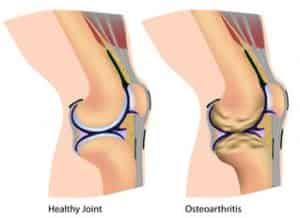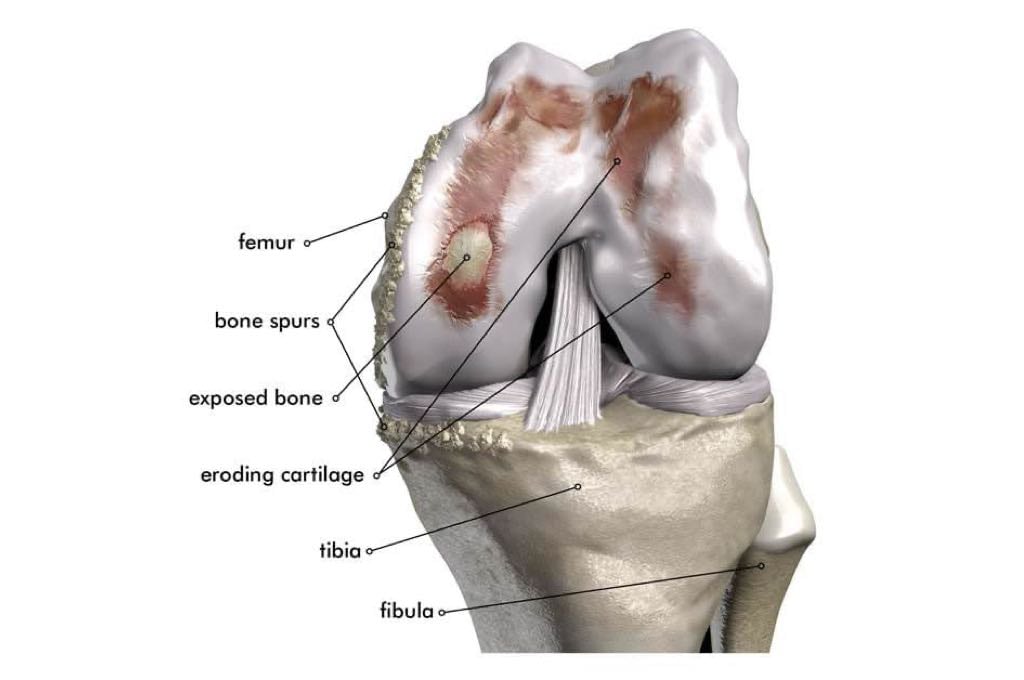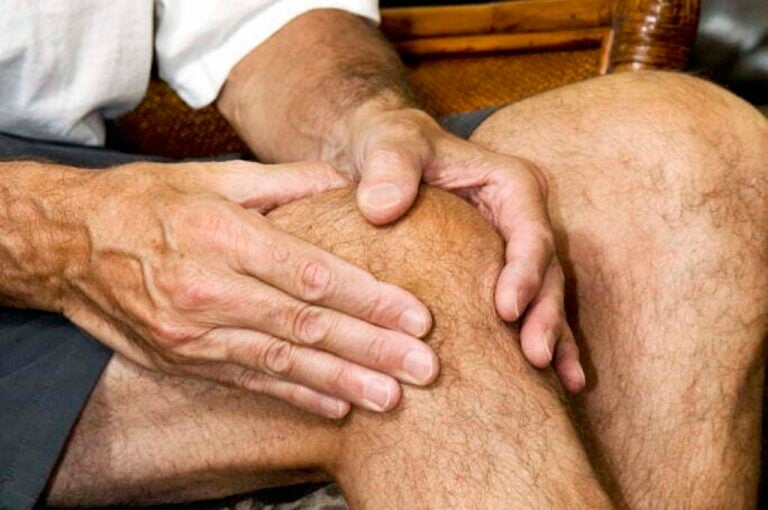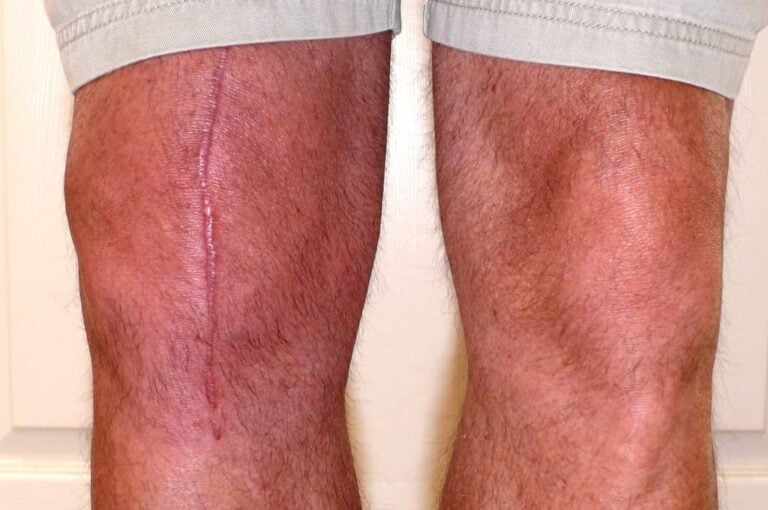
Osteoarthritis, also known as “wear and tear” arthritis, is a joint inflammation that results from cartilage degeneration. Healthy cartilage acts as a specially lubricated surface in the joint and under normal conditions is perfectly smooth. When the cartilage deteriorates, it becomes rough or disappears entirely leaving the bone surfaces to rub against one another, causing the pain people associate with having arthritis. Osteoarthritis of the knee is the most common form of arthritis, and is the most common cause of disability affecting millions of people around the world.1 As the disease advances, the condition can become extremely painful and debilitating. When non-surgical methods fail to control pain and improve joint function, surgery may be recommended by your doctor to alleviate the pain.2
Symptoms1,2,3
Knee osteoarthritis usually develops gradually over a period of years although in certain circumstances, it it can develop quite rapidly. Symptoms may vary greatly from patient to patient. Symptoms can include:
- Discomfort and stiffness upon waking or sitting for a prolonged period of time.
- Pain which flares up after you’ve been active, and calms when you rest.
- Loss of flexibility and less range of motion in the knee.
- Swelling stiffness and warmth in the knee area.
- Pain which may cause a feeling of weakness resulting in “locking” or “buckling”.
- Sudden sharp pains on weight bearing which can last from minutes to days – comparable to a “sharp stone in the shoe”.
Causes1,2,3

- Injuries involving joints can develop arthritic changes in later years.
- Osteoarthritis usually goes hand-in-hand with aging, so older people and the elderly are more likely to have symptoms, although this does not necessarily preclude younger adults (under 50) from falling prey to it.
- It is argued that very overweight and obese people are more likely to have osteoarthritis.
- A family history of the disease increases the likelihood of developing osteoarthritis.
Osteoarthritis has been known to occur, however, in people who have no risk factors and even the young.
Treatment
If you experience arthritis symptoms it is wise to see your doctor who will determine how much the disease has progressed and help you create a plan of action for managing your pain. The effectiveness of different treatments varies from person to person, so it is important to make a plan of action that is satisfactory for your situation.
Non-surgical treatments3,4
- Regular, gentle exercise like swimming, walking or easy cycling. Reasonable exercise can help increase range of motion and is often effective in reducing pain by keeping muscles strong and healthy.
- Supportive devices such as a cane or knee brace. The use of a knee brace has been shown to assist with stability, decrease pain, and assist in walking longer distances.
- Apply heat or ice, or a “hot & ice” liniment available from most drug stores.
- Over-the-counter medications like acetaminophen (paracetamol or Tylenol) may help manage pain.
- Extra weight puts more stress on your knees and hips. Losing weight if you’re overweight will reduce the stress.
- More advanced osteoarthritis pain may require prescription medication to manage the pain and delay the need for surgery.
- Joint lubricating injections performed by your doctor can greatly reduce pain and have been known to provide relief for up to several months.
Surgical treatment3
In later stages of osteoarthritis it may be necessary to consider surgical treatment, especially if the pain has become debilitating and your lifestyle greatly compromised. Some of the surgical procedures used to treat osteoarthritis of the knee:
- Arthroscopic surgery is minimally invasive and allows your surgeon to see into the joint and clean out debris or repair torn cartilage.
- An osteotomy which cuts through the tibia (shin bone) to realign the angle of the top of the bone.
- Cartilage grafting may be an option if your knee is very early in the process of the disease with little damage.
- A partial or total knee replacement replaces the components of your knee that have been severely damaged by osteoarthritis.
Your doctor may suggest a partial or total knee replacement if the degeneration of one or more compartments in your knee has become severe. Both partial and total knee replacement surgery involves removing sections of diseased bone within your knee and replacing them with precision engineered implants that will relieve the pain and improve your ability to walk.3 After a rehabilitation period of about 8 weeks you should notice improvements in your ability to move about independently and without the pain you previously experienced.
Orthopaedic surgeons are continuing to search for ways of treating arthritis of the knee. Current research is focusing on new drugs and on cartilage transplants in an effort to slow the progression of osteoarthritis.
Sources
- About.com, Eustice, Carol “Knee Osteoarthritis – What You Need to Know” https://osteoarthritis.about.com/od/kneeosteoarthritis/a/knee_OA.htm
- MedicineNet, “Osteoarthritis” https://www.onhealth.com/osteoarthritis/article.htm
- AAOS, American Academy of Orthopaedic Surgeons “Arthritis of the Knee” https://orthoinfo.aaos.org/topic.cfm?topic=a00212
- AAOS, American Academy of Orthopaedic Surgeons “Treatment of Osteoarthritis of the Knee” https://www.aaos.org/research/guidelines/OAKSummaryofRecommendations.pdf






